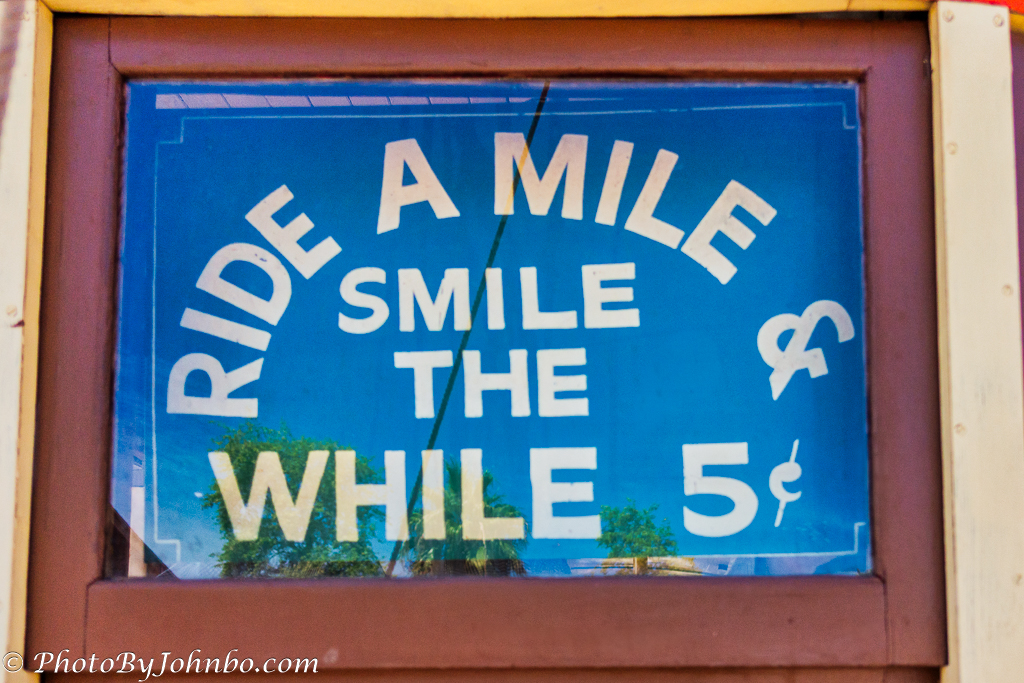
Phoenix, Arizona.
On a Saturday afternoon, we found ourselves trying to find parking near the Phoenix Trolley Museum’s new home. The museum is only open on Saturdays and only in Phoenix’s mild winters. On the day we stopped, there were maybe four volunteers there. We walked in about 1:00 p.m. and left around 2:30, about a half-hour from their closing time. In that hour and a half, we were the only museum visitors, and the docent on duty, Lanny Trapnell, provided a wonderful narration.
Lanny started by describing the original routes, the first an east-west run between what is now known as 7th Street and 7th Avenues. In 1887, that one-mile run was the entire width of the city of Phoenix.
In 1887, the cars were pulled along the tracks by two-horse teams. The museum has plenty of historical photos on display, and Lanny let us know that he could be as verbose or succinct as we wanted. Given we were the only guests, we gave him free rein to share the story.
The museum started at Hance Park, and the restored Trolley 116 provided runs for visitors on a short rail system until the lease with the park department expired at the end of 2017. Car 116 and other equipment were put into storage, and the museum officers found a new location at 1117 Grand Avenue. They opened in the new building with photographic displays and small artifacts.
In January 2024, the museum finally released Car 116, Car 504, and the recently rediscovered Car 509 from storage and placed them in the lot next to the museum building.
The city’s trolley system had a sad ending. In late 1947, a fire destroyed the car barn and all but six of the electric trolleys purchased by the city in 1928. Those six trolleys were spared only because they were still out on their daily runs. After the disaster, the city moved to bus transportation for Phoenix citizens.
Lanny welcomed us to the yard, and we started with a closeup look at Car 116. He pointed out some of the car’s features with a story or two about riding the trolleys “back in the day.”
Lanny reached into a cabinet high above one of the operator’s consoles and pulled out a couple of controls. He connected one to the throttle on his left and the other to the brake assembly in his right hand. He described the operation of the “dead man’s” throttle, which automatically removed power and applied brakes if the operator let go of the throttle control.
Lanny pointed out a foot-operated switch and told me to press it with my foot. I gently put my foot on the switch and pressed it slowly to the floor. Nothing happened. Lanny pointed out that I needed to press it more firmly. I did so and was rewarded with the sound of the trolley bell that was used to warn pedestrians and vehicles that a trolley was coming.
I asked about the signs above the windows. They are accurate reproductions of adverts posted in the cars in the later years of service. I was most interested in the Kodak Brownie camera ad, a film camera for $5, about $68 in today’s currency.
Stepping outside Car 116, I noticed a man working on the frame of another trolley. The volunteer, John Myers, had come from Texas to work on the rebuild of Car 504. Lanny told me that sometime in the 1940s, all cars numbered in the 100s were renumbered to 500s. The museum assigned Car 116 its original number at restoration as it was restored to its earliest configuration, fitting with the numbering of that era.
Car 509 was donated by a restaurant entrepreneur who owned a storage barn built around a trolley. Research proved that inside all of the sheet metal was Car 509, originally thought to have been destroyed in the barn fire in 1947.
The museum volunteers will have two major reconstructions in the future. Cars 504 and 509 will obviously require major restoration.
“Ride a Mile & Smile the While.” The opening photo of a placard on Car 116 is a quote from an original sign on one of the trolleys. Lawrence J. Fleming, one of the founding members of the Phoenix Trolley Museum, wrote a definitive history of the Phoenix Street Railway in 1977. “Ride A Mile And Smile The While. A History Of The Phoenix Street Railway 1887-1948.” A quote from the book tells the whole story of the slogan. “The Phoenix Street Railway was an essential part of a [not-so-]long-vanished scene. Street-cars had their shortcomings for they were noisy, hot in the summer, cold in the winter, sometimes had flat wheels and the ride could be rough. They did, however, run every ten minutes, go anywhere worth going in their day, and for only five cents. To use a slogan painted in gold over the motorman’s window on one of the cars, ‘Ride a Mile and Smile the While 5c.'”
Also on display are the two trolley trucks fitted to Car 116 when it was at Hance Park giving rides. The trucks are Birney models, slightly larger than the original trucks delivered with Car 116. The trucks were manufactured in Philadelphia and sold to a company in Japan. When they became available, they were purchased for use on Car 116.
This tractor was donated by Phelps-Dodge when it was removed from service at Douglas, Arizona, as part of the Copper Queen mining operation. The museum used the tractor to move Car 116 when its motor malfunctioned. A major restoration goal is to return Car 116 to its full operational status, which will be the “living history” part of the new museum.
The museum is open from 11 AM to 3 PM on Saturdays between October 1 and May 30 each year. There is no admission charge, but a free-will donation is greatly appreciated so the museum can continue its restoration projects and ongoing expenses. More details about the museum and the history of Phoenix’s first street car system can be found here. You can pixel-peep at the 2K HD versions of these photos on my Flickr site here.
John Steiner

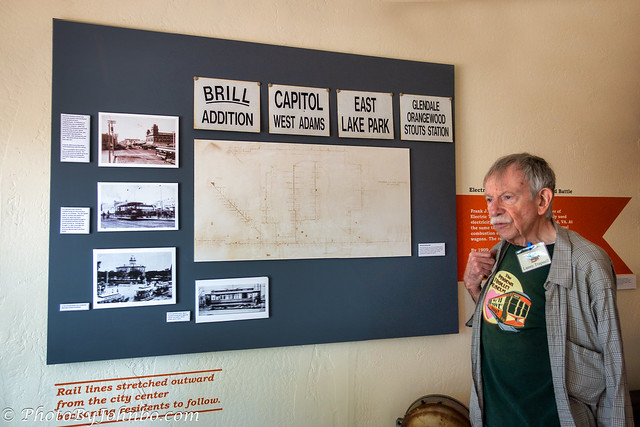

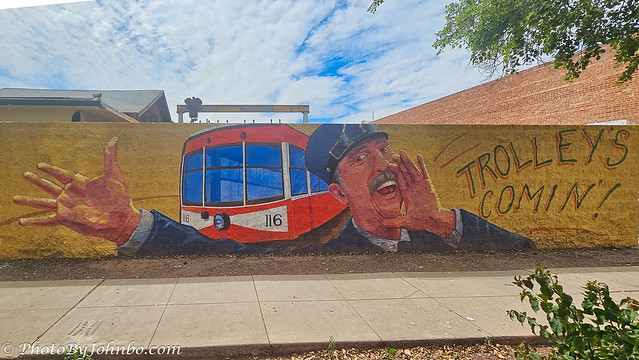
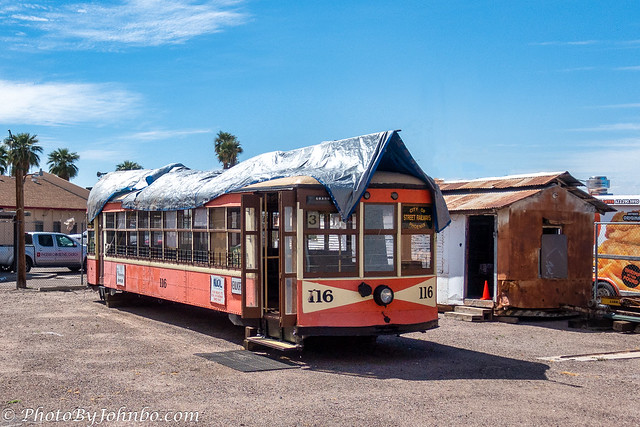

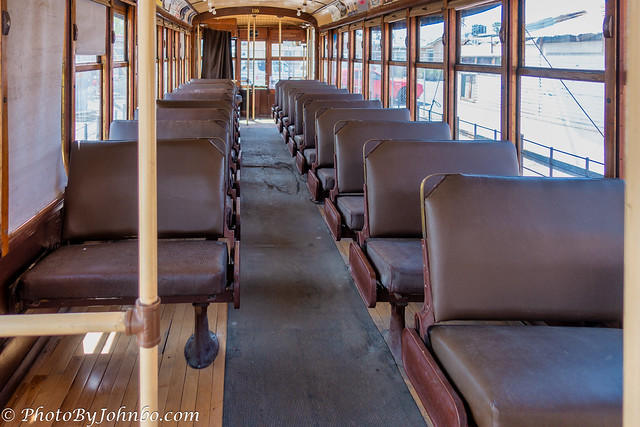





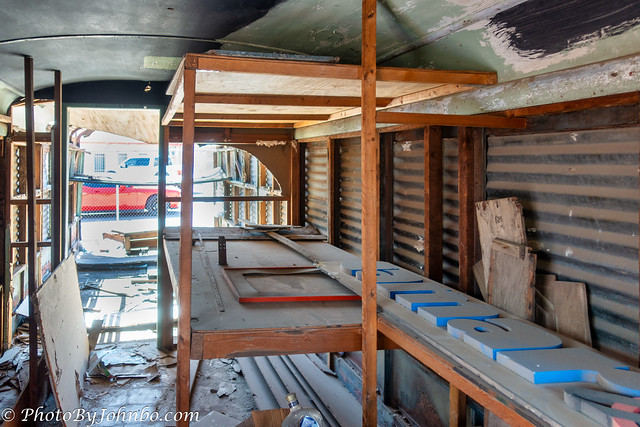


I wouldn’t have said that was my kinda place, but it actually looks fascinating, particularly with an engaging guide. Thanks for taking us along.
A knowledgeable guide can really add to an experience. It would have taken us maybe 20 minutes to walk through the place self-guided. Lanny kept us interested and wanting more for over 90 minutes.
I enjoyed your tour. I wish the city had kept those few cars running. Since they found car 509 now, perhaps not everything in the yard was completely unserviceable.
It will be interesting to watch what happens. We will keep an eye on their progress each winter now that we know about the museum.
Many thanks for sharing, John.
You are welcome, my friend!
Great history and photos. It’s wonderful that preservationists are caring for these trolleys.
It’s a shame that more of the remaining six cars couldn’t have been discovered before they got lost to history.
What an interesting place and great find John. Thanks for the tour and history.
You are welcome, Anne. This is just the kind of place I love to discover on our journeys.
😊
Wow!
Such a fascinating tour, John.
Thanks, Hammad!
I admire the enthusiasm and commitment of these history buffs who help to preserve the soul of a town. Thank you for paying tribute to them through your well-documented post.
Those who choose to preserve local history are indeed stewards of a community’s bygone times, keeping the stories alive.
Thanks so much for sharing this. I had it on my list of places to go for the longest time but forgot about it.
We will try to get there before it closes for the summer.
Thanks again for joining our house warming party in Sun City.
XOXO
Jodie
http://www.jtouchofstyle.com
You are welcome. Lanny is an interesting docent. It was nice meeting you guys at the open house.